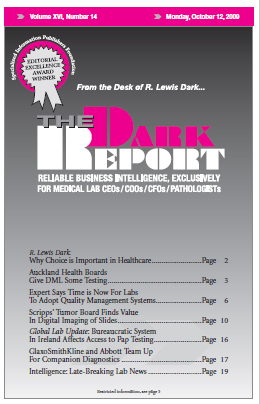CEO SUMMARY: Laboratories in the United States are knowledgeable about the use of quality control (QC) and quality assurance (QA) programs. But QC and QA represent only two small parts of a comprehensive quality management system (QMS), says Lucia Berte, an expert in lab quality. One benefit for clinical laboratories using a QMS is that […]
To access this post, you must purchase The Dark Report.


